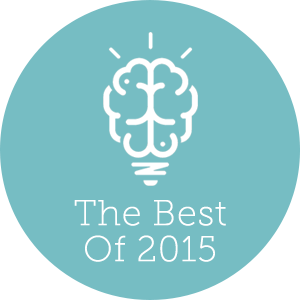How to Sell More and Increase Customer Satisfaction with The Choice Premium Effect
Relevant topics Archive, Conversion
Imagine you’re spending the night in your nearby cinema, viewing Hollywood latest blockbuster. What determines how much you’ll enjoy the movie?
You might think about factors such the film’s beautiful cinematography, the popcorn’s crisp bite or even the usherette’s cute smile. Surprisingly, brain scientists from Princeton University have now unearthed a much more subtle influence on our experience of pleasure: the freedom of choice you had prior to attending the movie. The pleasure generated from choosing between options – let’s say a romantic comedy and a sci-fi epic – spills over to the subsequent experience. This is called the Choice Premium Effect.
But wait. What’s new about that? It’s no secret that social scientists have outlined the power of choice for a long time already (notwithstanding that an abundance of options bears a negative effect on the likelihood of actually making a choice).
Yet, this brain study adds something very interesting. Not only does it illuminate which brain mechanisms underlie these positive feelings, tagging along some golden insights for marketing practice – it also provides clear guidance for when it’s wise to provide your customer with options and when it’s not. That’s the kind of science we like.
Why Our Brains Love to Choose
Let’s turn back to the cinema example. If you are a sci-fi nut, you would pick the larger-than-life Jurassic World over Magic Mike XXL 100% of the time. As such, having the option of choosing the latter shouldn’t matter. You wouldn’t watch it anyway. But that’s not what these researchers found...
Our brains are strongly attracted towards freedom. So much so that even seemingly irrelevant alternatives positively color the ultimate experience. In other words: the alternative of watching a bad movie makes the good movie you’re actually attending even better. Choosing between wine and beer makes the drink of choice taste better than any alternative would in isolation. The mere suggestion of freedom of choice shakes up a neural appetizer that enhances the subsequent experience.
Responsible for this interesting effect is a collective of ancient brain structures called the basal ganglia. This subcortical region is involved in emotional learning as well as approach and avoidance motivations. It’s an area on which humans have little conscious control, making it highly interesting for marketers seeking to resonate with their target market on a deep unconscious level.
Neurons in the basal ganglia divide in a ‘go’ and ‘no-go’ pathway. When the brain experiences freedom of choice, the ‘go’ path is strengthened whereas the neurons in the no-go pathway take a break. As a result, this increases the likelihood you will make the same choice later on.
How to Sell More and Increase Customer Satisfaction
Freedom of choice not only makes the superior alternative seem even better, it also prompts the brain to repeat that choice in the future. Both these effects greatly benefit our marketing goals. Especially products that lend themselves for repeat purchase.
Naturally, our products and services are often embedded in a choice-laden context. Supermarkets, online stores and even our own brand portfolio contain multiple alternatives.
So, where are the new opportunities veiled? It lies in the finding that the choice premium effect is greatest when choosing a high-value option, even when it is compared with a clearly inferior one (effectively making the choice a no-brainer). As marketer’s, it’s our job to shape a choice environment that brings about the highest satisfaction. Premium products and brands are wise to compete on the store shelves with an inferior competitor, or create multiple versions of the same product themselves.
It could even work on seemingly small choices that we often neglect as marketers. Most online stores offer just one method of shipping. Want to raise customer satisfaction? Just add a second alternative carrier. It doesn’t matter if it’s ten times the price, even bogus options will do.
And the next time you hold a meeting, don’t coin the classic ‘coffee?’ Spice up your choice mix with water – it’s free, anyway.
Beware of Negative Choices
While the choice premium effect often enhances product experience, there’s a clear exception: negative choices. When you have to choose between gulping a jar of Tabasco sauce or chewing a handful of madame Jeanette peppers, it actually makes the ultimate experience even more painful. It seems that freedom of choice amplifies the subsequent experience, be it negative or positive.
Further Reading
-
These are the 7 most interesting neuromarketing insights of 2015
I vividly remember reading a cool article last year. Scientist found that words that sound alike could trigger the same brain areas. Specifically they found that ‘bye now’ and ‘buy now’ were closely linked together. It was good to know that the hidden gems from the scientific journals still found their way to us marketers. But after that it got quiet. Where was I going to get those latest juicy insights?

